- Home
- Keith R. A. DeCandido
The Klingon Art of War
The Klingon Art of War Read online
Thank you for downloading this Gallery Books eBook.
* * *
Join our mailing list and get updates on new releases, deals, bonus content and other great books from Gallery Books and Simon & Schuster.
CLICK HERE TO SIGN UP
or visit us online to sign up at
eBookNews.SimonandSchuster.com
TABLE OF CONTENTS
Translator’s Note
Introduction
First Precept: Choose Your Enemies Well
Second Precept: Strike Quickly or Strike Not
Third Precept: Always Face Your Enemy
Fourth Precept: Seek Adversity
Fifth Precept: Reveal Your True Self in Combat
Sixth Precept: Destroy Weakness
Seventh Precept: Leave Nothing until Tomorrow
Eighth Precept: Choose Death over Chains
Ninth Precept: Die Standing Up
Tenth Precept: Guard Honor above All
Afterword
Appendix A: The Warrior’s Edge
Appendix B: The Siege of Jat’yln Pass
Appendix C: The Search for the Historical Kahless
Acknowledgments
About the Author
While writing this book, I went through a promotion test that elevated me from first-degree black belt to second-degree black belt in karate. I did not go through this test alone, and I want to dedicate this book to my fellow karateka:
Senpai Jorge Chan
Senpai Charles Keane
Senpai Cliff Nadaner
Senpai Rey Garcia
Osu, Senpais—we made it. I think we did the Klingons proud.
—Keith R. A. DeCandido
TRANSLATOR’S NOTE
Throughout this translation, several Klingon titles may be mentioned that are more familiar to audiences by their English titles. However, in the interests of preserving the integrity of the work, those titles are presented herein by their original titles in the Klingon language. Footnotes will provide the English titles.
In addition, some Klingon words are left intact, either because they do not have a direct translation, or because the word rendered in English has a different connotation. Some words are rendered in the tlhIngan Hol style preferred by linguists, others in the Anglicized style. (For example, the “moment of clarity” mentioned in the chapter on the Fifth Precept is rendered as the Anglicized tova’dok, whereas the spear in a game mentioned in the same chapter is referred to by the tlhIngan Hol term ghIntaq.)
INTRODUCTION
BY K’RATAK, SON OF M’LIND
One of the great mysteries of qeS’a’1 is its author. No credit was ever given on any of the copies of the text that circulated in scroll form throughout the Empire over the decades. Because of that, when the alleged “official” text was first published as a codex book in the Year of Kahless 450, it was credited directly to Kahless himself, even though no copies of the text existed until after Kahless’s departure and ascension to Sto-Vo-Kor. Given that qeS’a’ quotes the sacred texts, all of which were composed following Kahless’s ascension, it is almost universally accepted that the long-ago publisher who collected the precepts and explications into codex form wished to increase the appeal of such a volume by attributing its authorship to Kahless. Such behavior did that publisher dishonor. (The publisher of this edition would never engage in such cowardly conduct.)
Complicating matters is the text’s use as a song. In addition to being a text of precepts and explications of those precepts, qeS’a’ is also a very popular chant. The question of which came first, the song or the text, remains an open one, and has been debated by scholars for centuries. The song itself is simply ten verses of four lines each: the precept, followed by the word qeS’a’ repeated once. Emperor Kaldon is said to have sung the song before leading his troops into battle, and Captain Tangorq famously sang it before his battle against the Romulans at Qal-Sor.
The text itself has, of course, been published many times since 450, in many forms both physical and electronic. A course is taught on the book at the Elite Command Academy, which is required for students to graduate.
Yet still the actual author remains a mystery.
Many scholars have turned their minds to this problem, examining the text over and over again, comparing it to other contemporary writings from just after the time of Kahless.
For many turns, it was believed that Klavek, one of the authors of the paq’batlh2, wrote qeS’a’. The paq’batlh was an attempt by followers of Kahless to bring together his teachings and other matters of honor into a single volume, with secondary tomes by several authors, Klavek among them. The sacred texts were included as part of the paq’batlh, but many clerics derided the secondary tomes, including those written by Klavek, as irrelevant and presumptuous. (Klavek is the only author of a secondary tome in the paq’batlh who lived when qeS’a’ was released.)
However, recent scholarship has proven that Klavek did not author qeS’a’. Klavek’s word choices in the paq’batlh were radically different from what we see in qeS’a’. Furthermore, letters of Klavek’s that were recently unearthed reveal that he had no use for this book, describing it as a “flawed volume, filled with idiocy and foolishness,” based on a song he derided as “repetitive and tiresome.”
Another school of thought—embodied by B’Olara, daughter of Salka, one of the leading Kahless scholars at the Imperial University—holds that it was written by the Lady Lukara after Kahless’s ascension. It certainly fits in with the great work that Lukara did in ensuring that Kahless’s life’s work survived his departure, most notably forming the Order of the Bat’leth. Its members were charged with maintaining the wisdom of Kahless as the watchword of the Klingon people.
If, however, this text was by Lukara, it is the only known document written by her. What we know of Lukara comes from the sacred texts, most of which were written by Edronh, one of Kahless’s followers, who became a scribe later in life, and Edronh’s son Golennoq. The great lady herself wrote nothing that survived.
Except, perhaps, for qeS’a’. Of course, many believe that either Edronh or Golennoq was the author. There are stylistic similarities between qeS’a’ and the sacred texts, though those similarities can be found in many writings from the time of Kahless through to the Hur’q invasion. In addition, the stories told by and of Kahless in qeS’a’ all match those in the sacred texts, sometimes word for word.
Of course, qeS’a’ also mentions the Hur’q invasion, so it had to have been written afterward, which means that Edronh could not have been the author, as he died during that invasion. This brings up the entire debate regarding the authorship of the sacred texts themselves: some believe that it was only Edronh who wrote them, with Golennoq merely transcribing the words of his father; others that it was only Golennoq, but that he gave credit to his father out of respect for the stories he told him of Kahless. In his examination of qeS’a’, the cleric Koroth believes that the common supposition—that Edronh and Golennoq both wrote the sacred texts—is also reflected in qeS’a’, that in both cases, Golennoq continued the work of his father after Edronh died in the Hur’q invasion.
However, the question of authorship of qeS’a’ received another possible answer with the dissolution of the House of Gorvon. That noble House came to an end when its last member—B’Yra, the only surviving child of Gorvon—died. (Most of the House’s other members were killed during the Dominion War.) Upon B’Yra’s death, her lands were seized by the High Council, and in the attic of her estate, many papers were found.
One of Gorvon’s ancestors, for whom he was named, was among the first inductees into the Order of the Bat’leth. In a chest that also contained Gorvon’s d’k tahg, his armor,
and many other possessions clearly belonging to him, were scrolls that included the entire text of qeS’a’ written by hand. The original copies of qeS’a’ date from during Gorvon’s lifetime. Is it possible that what lay in that chest was the original manuscript?
Casting doubt on this possibility is the presence of several other scrolls, in the same hand, containing the words of epic poems from long before the time of Kahless. It is possible that Gorvon simply enjoyed transcribing works that had meaning to him. The great cleric Kas’l sang the praises of creating handwritten transcriptions of the stories of our people, believing such actions to hold great power and meaning. (Kas’l also firmly believed that Kahless himself wrote the sacred texts as well as qeS’a’.)
Still and all, the authorship of qeS’a’ is of far less import than the words themselves. Whoever the author might be, that Klingon gave us a guide to living that can apply to all warriors—regardless of class or standing within the Klingon Empire. As Kahless himself said, “All life is a battle.” And all those who live wage war in one way or another. qeS’a’ provides a guide to fighting all of life’s battles.
Though written centuries ago, the precepts in qeS’a’ are still of use in today’s Klingon Empire, just as the words of Kahless still ring in our hearts. Indeed, they serve as a supplement, a reinforcement of what Kahless taught us. Too often, young Klingons grow up knowing only that they should follow honor because Kahless told them to, but they don’t always know what that means. While the sacred texts—and the paq’batlh—delve into honor and duty and courage and the true way of the Klingon warrior, in-depth study of them is daunting, especially for a youth.
The greatness of qeS’a’ is that it is accessible to all. One need not be a scholar or cleric to comprehend the precepts and anecdotes contained in this tome. But it is also not simplified to platitudes a Klingon may follow by rote. Here are not bare instructions, but unfolding lessons.
Here, one can learn the true meaning of honor. Here, one can understand through the actions of Kahless, his comrades, and even his foes, as well as those who came before and after him, the role honor plays in a Klingon’s life every single day.
We are warriors, but we do not fight merely to fight. We are conquerors, but we do not conquer merely to conquer. We are Klingons, and we serve the causes of honor and duty and courage, standing as an example for all the galaxy to see. The guide to how we stand—and why—can be found in this volume.
The present edition accomplishes this through stories and anecdotes, and here I have supplemented the ancient tales with newer examples. The original manuscript was written at a time when the Klingon Empire consisted only of Qo’noS, when we were just starting to explore the black sky of space, when the only alien species we had encountered were Hur’q pillagers. A millennium later, we are one of the great powers of this part of the Galaxy. We have fought and won battles against the United Federation of Planets, the Romulan Empire, the Holy Order of the Kinshaya, the Cardassian Union, the Dominion, the Borg, and the Typhon Pact.
The lessons of Kahless and the precepts that were derived from those lessons to form the body of qeS’a’ continue to influence our lives as Klingons. The warriors of today also need guidance from stories that have actually happened in their lifetimes, or in the memories of their parents and grandparents.
And so the format of this edition is as follows: This volume is divided into ten sections, one for each of the original ten precepts of qeS’a’. Within those ten sections will be the precept itself, the quote from Kahless whence the precept derives, the dictum summarizing the precept, the text that accompanied the precept in the original edition, and my own commentary. As a member of a noble House, and as a prominent novelist within not only the Empire but the Galaxy at large, I have seen much, heard many stories, and encountered a wide variety of people. Those experiences have enabled me to provide the reader with familiar stories to illustrate the precepts, and also to show how these precepts play a part in Klingon life to this very day.
May the words in the rest of this tome provide all of you with the wisdom to achieve victory in the battles that life happily provides. Qapla’!
* * *
1. The best translation for this might be “The Indispensable Advice.” qeS’a’ is often known as The Klingon Art of War.
2. The Book of Honor.
FIRST PRECEPT
CHOOSE YOUR ENEMIES WELL.
“The wind does not respect a fool.”
—KAHLESS
Once, the Empire was surrounded by enemies, by its own choice. It was a rock in the sea. Now it had united with two former foes against the greatest threat the Galaxy had seen to that point: the Dominion.
DICTUM: THE PROPER FOE
WARRIORS MUST REGARD THEIR ENEMIES AS HIGHLY AS THEY REGARD THEMSELVES. WITH NO ENEMY, A WARRIOR IS ONLY HALF ALIVE. THE FOE IS THE WARRIOR’S MIRROR, AND THE WARRIOR FINDS IN HIS OPPONENT THE TRUE IMAGE OF HIMSELF. WARRIORS CRAVE FOES AGAINST WHOM THEY CAN BE TESTED, THEIR LIMITS EXPOSED AND TRANSCENDED. RECOGNIZING ONE’S RIGHTFUL ENEMY IS AS SWEET AS DISCOVERING A HIDDEN PART OF ONESELF, A LONG-DORMANT DESIRE, AN AMBITION RESURGENT. FACING AND DEFEATING THIS ENEMY REFINES AND ELEVATES THE HIDDEN SELF, THE ESSENTIAL NATURE. VICTORY AGAINST AN ENEMY TOO EASILY BESTED IS FRAUDULENT, A SHAM OF HONORABLE COMBAT, AND IT REVEALS ONLY THE BLEMISH IN A WARRIOR’S HEART.
THE WALLS OF QUIN’LAT
One day, Kahless stood outside the walls of Quin’lat as a storm approached. With him was a man who refused to take shelter within that great city’s walls.
Kahless went to him and asked why he remained outside the city, and the man scoffed. “I am not afraid. I will not hide my face behind stone and mortar. I will stand before the wind and make it respect me!”
While Kahless accepted the man’s choice, he did not share it, and he sought the protection of Quin’lat’s walls.
A day later, the storm came. Those who stayed within the city survived.
The man who stood outside the city died.
No doubt the man was a great warrior with many victories to his credit before he faced the wind, but as Kahless had known, he was a fool, for he did not choose his enemy well. His vanity was polish for a poor shield.
Life is nothing if not a succession of battles, in which warriors choose their weapons, their cause, and their manner of combat.
But the most important choice they make is the enemy they fight. It is this more than anything that dictates the path a warrior will follow: wise or foolish, wreathed in victory or adorned with false glory, the subject of admiration or the object of scorn.
Only by fighting worthy foes and by engaging in combat against an enemy who tests your mettle, forcing you to strive for glory in honorable combat, do you fulfill the needs of honor.
One must not choose the enemy who will provide the easiest path to victory. Unearned victory is meaningless. Better a hard-fought defeat than a stolen triumph. A true warrior fights only those who provide a strong battle to enrich the spirit.
Hardship sweetens triumph just as comfort embitters it. A medal offered too readily is a medal unworthy of wearing.
You cannot always choose your opponent, of course. Soldiers know this, for their enemies are identified by their commanders, who point at a foe and tell their subordinates to attack.
But you can sometimes pick a battle. It is best, then, to choose wisely.
An unstoppable foe will provide only defeat, as the man at Quin’lat learned to his eternal regret. No doubt his soul still sails upon the Barge of the Dead, wishing he had chosen his life’s last enemy with more skill.
THE ARENA
The invincible foe is a poor choice, but so too is the enemy against whom one can only win. While an unworthy foe will provide victory, a victory so easily won is worth little. The honor of combat is not just to achieve victory, but to enrich the spirit. If the foe be worthy, defeat brings no dishonor. As long as both combatants are strong, and do honor to their status as warriors, outcome is secondary.
Therefore, if one chooses an easy enemy against whom victory is a foregone conclusion, where then is the honor? If you win, you have not truly won anything, for the path to victory was paved with the stones of your foe’s unworthiness.
Worse, if you are defeated by a foe you should have bested, what does that say about your abilities as a warrior?
Before the time of Kahless, the warlord Pohm ruled the Kir peninsula. Pohm held contests in the arena to prove he was the mightiest warrior in his realm. But Pohm always made sure the foes he faced were poor warriors. Against the lame and the sick and the old, he fought. The foes were dressed up in mighty armor and gleaming helmets. They were given the finest weapons, though they had no knowledge of how to use them.
To those who watched, Pohm seemed a mighty warrior indeed. For many turns he suffered no defeat. Every time true warriors attempted to challenge the warlord in the arena, mysterious accidents befell them, and they withdrew their challenges.
After Pohm’s defeat by General Kizhar, the deception was revealed to the people. By that time, the people, perhaps sensing his dishonor, had started to turn against him.
KOPF’S CLIFF
An enemy you might one day need to rely upon is also a foolish one to make. Kahless once told the story of the two warriors who lived on Kopf’s Cliff. One warrior constructed a house there with a magnificent view of the Klin Valley and the path an advancing enemy was most likely to take. He moved his family there.
The second warrior’s house was lost in one of the brushfires that often ravage Kopf’s Cliff. When the second warrior built a new home, he placed it in a new location, one that blocked the first warrior’s sightlines of the valley. The first warrior had other views he could enjoy, of course. But he had lost his accustomed vista and so chose to take issue with the second warrior and make an enemy of him.

 Alien
Alien Miracle Workers
Miracle Workers Articles of the Federation
Articles of the Federation Supernatural Heart of the Dragon
Supernatural Heart of the Dragon War Stories: Book Two
War Stories: Book Two The Zoo Job
The Zoo Job Under the Crimson Sun
Under the Crimson Sun Breakdowns
Breakdowns Mermaid Precinct (ARC)
Mermaid Precinct (ARC) Supernatural 1 - Nevermore
Supernatural 1 - Nevermore STAR TREK - The Brave and the Bold Book One
STAR TREK - The Brave and the Bold Book One Four Walls
Four Walls The Klingon Art of War
The Klingon Art of War Blackout
Blackout War Stories: Book One
War Stories: Book One The Brave and the Bold Book Two
The Brave and the Bold Book Two Honor Bound
Honor Bound Sleepy Hollow: Children of the Revolution
Sleepy Hollow: Children of the Revolution Worlds of Star Trek Deep Space Nine® Volume Three
Worlds of Star Trek Deep Space Nine® Volume Three Star Trek: TNG: Enterprises of Great Pitch and Moment
Star Trek: TNG: Enterprises of Great Pitch and Moment Genesis
Genesis Demons of Air and Darkness
Demons of Air and Darkness Star Trek - TNG - 61 - Diplomatic Implausibility
Star Trek - TNG - 61 - Diplomatic Implausibility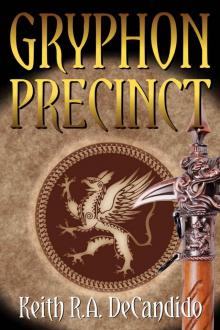 Gryphon Precinct (Dragon Precinct)
Gryphon Precinct (Dragon Precinct)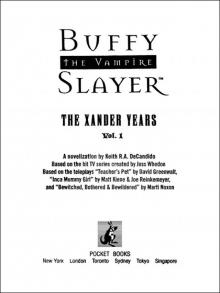 THE XANDER YEARS, Vol. 1
THE XANDER YEARS, Vol. 1 Nevermore
Nevermore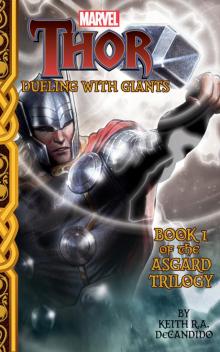 Thor
Thor The Brave And The Bold Book One
The Brave And The Bold Book One I.K.S. Gorkon Book Three
I.K.S. Gorkon Book Three STARGATE SG-1: Kali's Wrath (SG1-28)
STARGATE SG-1: Kali's Wrath (SG1-28) Bone Key
Bone Key Guilt in Innocece
Guilt in Innocece Star Trek - DS9 Relaunch 04 - Gateways - 4 of 7 - Demons Of Air And Darkness
Star Trek - DS9 Relaunch 04 - Gateways - 4 of 7 - Demons Of Air And Darkness The Art of the Impossible
The Art of the Impossible I.K.S. Gorkon Book One: A Good Day to Die
I.K.S. Gorkon Book One: A Good Day to Die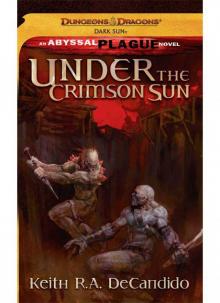 Under the Crimson Sun (the abyssal plague)
Under the Crimson Sun (the abyssal plague)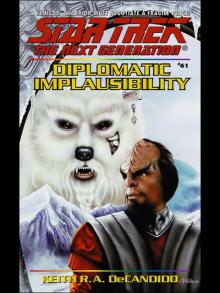 DIPLOMATIC IMPLAUSIBILITY
DIPLOMATIC IMPLAUSIBILITY Tales from the Captain's Table
Tales from the Captain's Table A Burning House
A Burning House Cycle of Hatred (world of warcraft)
Cycle of Hatred (world of warcraft) Have Tech, Will Travel
Have Tech, Will Travel Security
Security